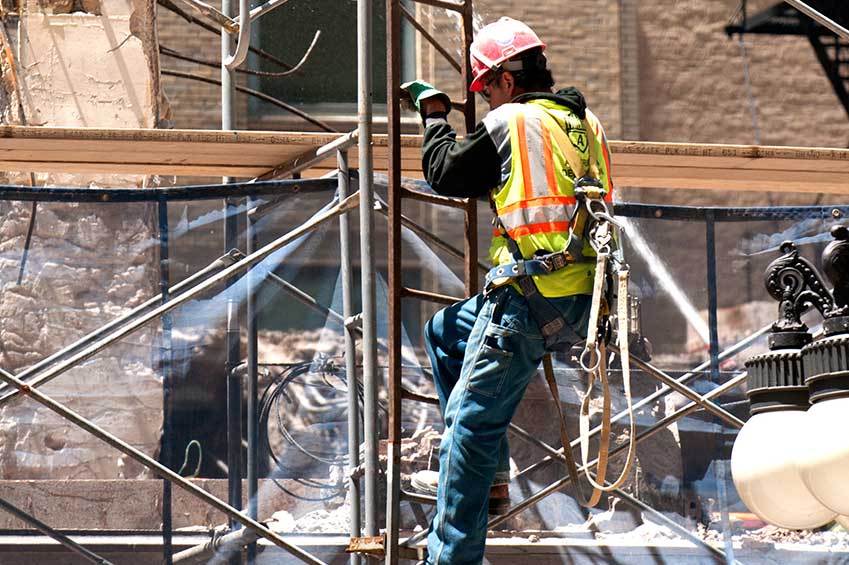
- January 10, 2025
- Attorney David Mann
- Workers' Compensation
We’ve got a lot of hard-working people in Georgia, people who go to their jobs every day, giving their best effort to do good work and support their families. Unfortunately, many of these workers fall victim to injuries in the workplace and find themselves struggling to provide financial security for their loved ones because of an accident that happened on the job.
We have seen many different types of workplace injuries involving our clients, but there are some that occur more often than others. In this blog post, we will discuss the most common workplace injuries.
Most Common Workplace Injuries
Some of the most common workplace injuries are:
- Overexertion –injuries related to pulling, lifting, pushing, holding, carrying, and throwing
- Fall on Same Level – such as on a wet, slippery floors
- Fall to Lower Level –from an elevated area, such as a roof, ladder, or stairway
- Bodily Reaction – from bending, climbing, reaching, standing, sitting, slipping or tripping without falling
- Struck by Object – being hit by something that fell, like an item off a shelf or a tool dropped by another worker
- Struck against an Object – caused by running into objects such as walls, doors, cabinets, glass windows, table, chairs, etc.
- Highway Incident – collisions involving cars and trucks used for business purposes
- Caught In/ Compressed By – where large and dangerous machinery is used, typically in factories and where safety measures are ignored
- Repetitive Motion –strained muscles and tendons, causing back pain, vision problems, and carpal tunnel syndrome, from repeating the same motions over a period of time as in using a keyboard or on the assembly line
- Assaults and Violent Acts – robberies, homicides and attacks perpetrated against employees in high-risk occupations or locations.
There are many laws and regulations which require employers to take steps to mitigate the risk of injury to employees, such as carefully planning the location of the equipment, shelving, tables and chairs and other elements of the workplace; placing warning signs in hazardous areas or around dangerous equipment; and using engineering control systems to minimize awkward positions, strenuous handling, and repetitive motion problems.
Common Citations For Safety Violations
According to the Occupational Safety and Health Administration (OSHA), the 10 most common citations for safety violations involve:
- Fall protection
- Scaffolding
- Hazard communication
- Respiratory protection
- Lockout
- Electrical, wiring methods
- Powered industrial trucks
- Ladders
- Electrical, general requirements
- Machine guarding.
What Should I Do If I Am Injured At Work
If you have been injured while at work, you should take the following steps to ensure your rights are protected:
- See a doctor without delay – Your employer is required to provide a list of doctors you may select from. But if your injuries are serious and you need emergency care, you can go to any licensed doctor. To make a claim for workers’ comp benefits, you will need to show that the injuries were work-related.
- Report your injury to your employer as soon as possible – Make a written report of the accident and injury to the appropriate authority at your place of business. This must be done within 30 days after the accident or the doctor’s diagnosis in order to be eligible for workers’ compensation. Even if you don’t think the injury was serious, it is best to file a report. Consulting a personal injury lawyer can also help ensure you’re taking the right steps
- Document your time away from work – Keep a record of the time you have to miss because of the injury. You may be eligible for temporary or permanent disability or for benefits that make up for your having to take a lower-paying job.
- Follow the doctor’s recommended treatment plan – In other words, do what the doctor tells you to do. If you are dissatisfied with the proposed plan, you may seek a second opinion.
Workplace Injuries and Workers’ Compensation Claims
If you are injured at work, your benefits will most likely come from a workers’ compensation claim. Most employers in Georgia are required to have workers’ compensation insurance for injuries sustained while on the job. In order to qualify for workers’ compensation in Georgia, you must fall into both of these categories:
- Your injury must have occurred while on the job. If you are injured while traveling, you may qualify for workers’ compensation as long as you were performing tasks for your employer.
- You must be considered an employee. Generally, this means you are paid a salary or an hourly wage and taxes are taken out of your paycheck. Independent contractors or freelancers are usually not considered employees.
Types of Workers’ Compensation Benefits You Can Receive
If you were approved for workers’ compensation benefits, you can expect to receive benefits for the following:
- Medical Treatment – Medical treatment can include medication, doctor’s appointments, surgeries, or any other medical treatment needed for rehabilitation. Depending on your employer, you may have to use an authorized treating physician. In many cases, however, you can use a doctor of your own choosing.
- Lost Income – While there are many factors that come into play, you should be able to obtain income benefits after waiting seven days. Depending on the situation and the severity of your injury, you could get two-thirds of your average weekly wage up to a maximum amount.
Workers’ compensation claims can be complex and, at many times, confusing. We hope that this blog post helped you understand most common workplace injuries.
Contact The Workplace Injuries Attorneys At Mann Law Today
The attorneys at the Mann Law Firm have been helping clients with their workers’ compensation claims for over 30 years. David Mann used to work as in-house defense counsel for a large insurance company, so he understands the tactics they use to pay out claims for less than they are worth. He has a key understanding of workers’ compensation claims. Call us today at (478) 742-3381 for a free consultation. At the Mann Law Firm, you always come first.



 Before leading his own firm, Mann served for several years as in-house defense counsel for a large insurance company, which gives him unique insight into how insurance companies work. He uses this critical knowledge as an advantage for his clients. He is a tough negotiator and litigator, and he is exceptionally strategic in building cases on behalf of personal injury victims.[
Before leading his own firm, Mann served for several years as in-house defense counsel for a large insurance company, which gives him unique insight into how insurance companies work. He uses this critical knowledge as an advantage for his clients. He is a tough negotiator and litigator, and he is exceptionally strategic in building cases on behalf of personal injury victims.[ 
